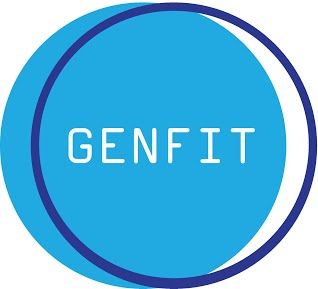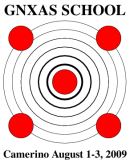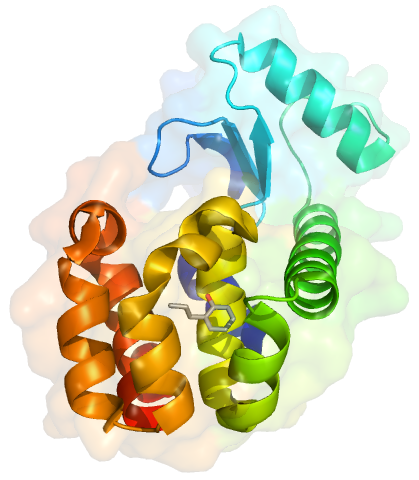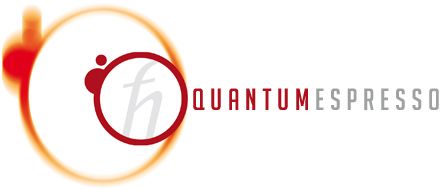Software

GENFIT (and SASMOL)
GENFIT is a software tool for analysing small-angle scattering (SAS) data from X-ray (SAXS) or neutron (SANS) experiments. It reads in a set of one-dimensional scattering curves and fits them using different kinds of models. SAS curves calculated from a model can be smeared to allow for the instrumental resolution. The user can fit the experimental data selecting one or more models from a list including more than 30 models, starting from simple asymptotic behaviours (Guinier's law, Porod's law, etc.) down to complete atomic structures. Some models, which are defined in terms of both form and structure factors, take into account the interactions between particles in solution. GENFIT is able to simultaneously fit more SAS curves via a unique model or a mixture of models. In the latter case, some specific model parameters can be shared by any selection of the experimental curves. Model parameters can be related to the experimental chemical-physical conditions (temperature, pressure, concentration, pH, etc.) by means of link functions, which can be freely defined by the user. On the other hand, GENFIT can be used to generate theoretical SAS curves from a given model and/or from the knowledge of the species in solution. It can hence be a useful instrument to find the optimum experimental conditions for a planned SAS experiment. GENFIT is written in Fortran. Versions 2.0 and higher make use of a graphical user interface (GUI) to manage input files and execute the calculations.

GNXAS
The GNXAS package is a computer code for EXAFS data analysis based on multiple-scattering (MS) calculations and a rigorous fitting procedure of the raw experimental data. The main characteristic of the software are: + atomic phase shifts calculations in the muffin-tin approximation based on atom self-consistent relativistic calculations. Account for the neighbors is taken. + Inclusion of inelastic losses through complex Hedin-Lundqvist potential. + Calculation of MS signals associated with two, three, and four atom configurations using advanced algorithms. Use of an advanced fitting procedure that allows: + to fit simultaneously any number of spectra containing any number of edges, + to use directly the raw data without any pre-analysis, + to account for complex background multi-electron excitation features, + to use various model peaks for the pair, triplet and quadruplet distribution functions, including non Gaussian models and extreme cases. In all cases absolute parameters can be fitted, - to treat liquid phase or disordered systems and extract reliable g(r) functions in the short range, - to perform a rigorous statistical error analysis and plot two-dimensional correlation maps, - to provide a flexible scientific tool for EXAFS data analysis where the user has access to every stage of the calculation. - full modularity that makes easy to interface parts of the GNXAS software with other available software.

GROMACS
GROMACS (GROningen MAchine for Chemical Simulations) is a molecular dynamics and energy minimization package mainly designed to simulate the Newtonian equations of motion for systems with hundreds to millions of particles, typically of proteins, lipids and nucleic acids. GROMACS can run on CPUs and GPUs.

MAUD
Materials Analysis Using Diffraction: A Rietveld extended program to perform combined analyses. It can be used to fit diffraction, fluorescence and reflectivity data using X-ray, neutron, TOF or electrons

MDANSE
MDANSE (Molecular Dynamics Analysis for Neutron Scattering Experiments) is a python application designed for computing properties that can be directly compared with neutron scattering experiments such as the coherent and incoherent intermediate scattering functions and their Fourier transforms, the elastic incoherent structure factor, the static coherent structure factor or the radial distribution function. Moreover, it can also compute quantities such as the mean-square displacement, the velocity autocorrelation function as well as its Fourier Transform (the so-called vibrational density of states) enlarging the scope of the program to a broader range of physico-chemical properties. Most of MDANSE calculations can be applied to the whole system or to arbitrary subsets that can be defined in the graphical interface while less common selections can be specified via the command-line interface. MDANSE is written in Python and currently works on Linux/debian, MacOS and Windows.

MXAN
MXAN performs a quantitative analysis of the XANES energy range. This is based on a comparison between experimental data and many theoretical spectra that are calculated by varying selected structural parameters of an initial putative structure, i.e. a well defined initial geometrical configurations around the absorber. Hundreds of different geometrical configurations are needed to obtain the best fit of the experimental data. The calculations are performed in the energy space without involving any Fourier transform algorithm; polarized spectra can be easily analysed because the calculations are performed within the full multiple scattering approach. Recently, MXAN has been developed in the framework of the multiple scattering theory and successfully applied to the analysis of several system, both in solid and liquid state. The MXAN procedure,encompasses also the phenomenological broadening and the electronic charge fitting.
NRS
NRS is a fitting and simulation routine for nuclear resonant scattering, based on CONUSS (s. the related catalogue entry). It can fit and simulate both spectra in the time domain and in the energy domain. The program allows for three different scattering geometries: forward scattering, grazing incidence scattering, and a combination of both. In addition, it can be used to simulate electronic and nuclear reflectivity curves.
OCEAN
OCEAN is a versatile package for performing first-principles calculations of core edge spectroscopy. The many-body method is based on ground-state density-functional theory (DFT) and uses the Bethe-Salpeter equation. OCEAN utilizes the programs ABINIT or QuantumESPRESSO for ground-state DFT portion of the calculations. OCEAN is capable of producing various spectra including X-ray absorption near-edge spectra (XANES), X-ray emission spectra (XES), and non-resonant inelastic X-ray scatter (NRIXS or XRS). OCEAN is the result of collaboration between the Rehr group at the University of Washington and Eric Shirley at the National Institute of Standards and Technology (USA).
P
Combined EXAFS and XRPD data analysis with EXAFS full multiple scattering calculations and whole-spectrum fitting. A code designed to maximise the usefulness of the EXAFS technique in the investigation of crystalline materials which powder diffraction (PD) methods could not uniquely resolve. The program retains many of the features of EXCURVE (s. the related web pages) and provides most of the PD features of the program GSAS. For EXAFS this includes full multiple scattering calculations and whole-spectrum fitting, but at present it cannot deal with EXAFS polarisation dependence. PD calculations currently exclude calculation of the thermal diffuse scattering contribution, which is included in the background.
PyFAI
pyFAI is an azimuthal integration library that tries to be fast (as fast as C and even more using OpenCL and GPU). It is based on histogramming of the 2theta/Q positions of each (center of) pixel weighted by the intensity of each pixel, but parallel version uses a SparseMatrix-DenseVector multiplication

Quantum Espresso
Quantum ESPRESSO (QE) is an integrated suite of Open-Source computer codes for ab initio quantum chemistry methods of electronic-structure calculations and materials modeling at the nanoscale. It is based on density functional theory, density functional perturbation theory, plane wave basisi sets, and pseudopotentials. The core plane wave DFT functions of QE are provided by the PWscf (Plane-Wave Self-Consistent Field) component,
REFTIM
The program REFTIM calculates and fits the time spectra of nuclear resonant reflectivity, delayed and prompt reflectivity curves and the corresponding conversion electron Mössbauer spectra (CEMS) for any multilayer structure containing 57Fe, 151Eu, 149Sm, 119Sn or other isotopes if they have M1 Mössbauer transition. The experimental details of the nuclear resonance scattering technique with synchrotron radiation are described in the ID18 beamline Web pages.
RFit2000
RFIT2000 fits X-ray and neutron reflectivity data. The search of global minima is done via successive descent from local minima. This method can be treated as a two stage loop repeated consequently. The first stage is the local minimization with the ?2 -like criterion and the second one is the descent from the most recent local minimum. Reflectivity curve is calculated with one of the methods: Kinematic, Parratt and Matrix. Matrix method works faster for films modeled with multiple repetion of one identcal structural units. Film structure is represented with the box model. Each box is characterized with the scattering density (Re and Im), thickness and roughness of the top interface.

ROD
ROD is a program that can be used to do a refinement of a surface structure using surface X-ray diffraction data. All main features one encounters on surfaces, like roughness, relaxations, reconstructions and multiple domains, are taken into account. The most essential part of ROD is the calculation of the structure factor of the surface. ROD is complemented by two utilities: ANA and AVE: ANA can be used to integrate scans and to convert these into structure factors, while AVE can sort and average data, determine agreement factors and produce a data file for the program ROD.
SASfit
SASfit has been written for analyzing and plotting small angle scattering data. It can calculate integral structural parameters like radius of gyration, scattering invariant, Porod constant. Furthermore it can fit size distributions together with several form factors including different structure factors. Additionally an algorithm has been implemented, which allows to simultaneously fit several scattering curves with a common set of (global) parameters. This last option is especially important in contrast variation experiments or measurements with polarised neutrons. The global fit helps to determine fit parameters unambiguously which by analyzing a single curve would be otherwise strongly correlated.

